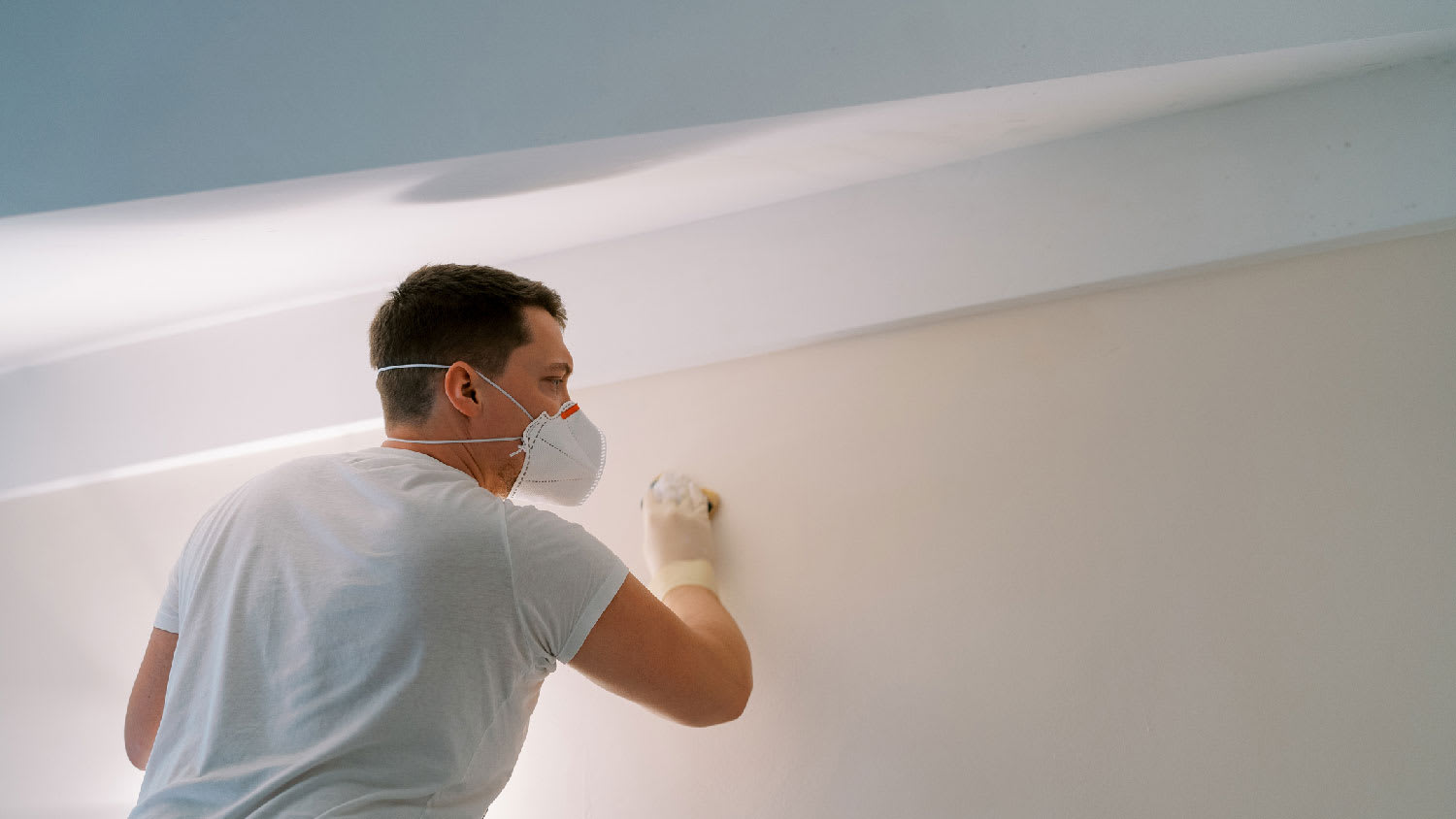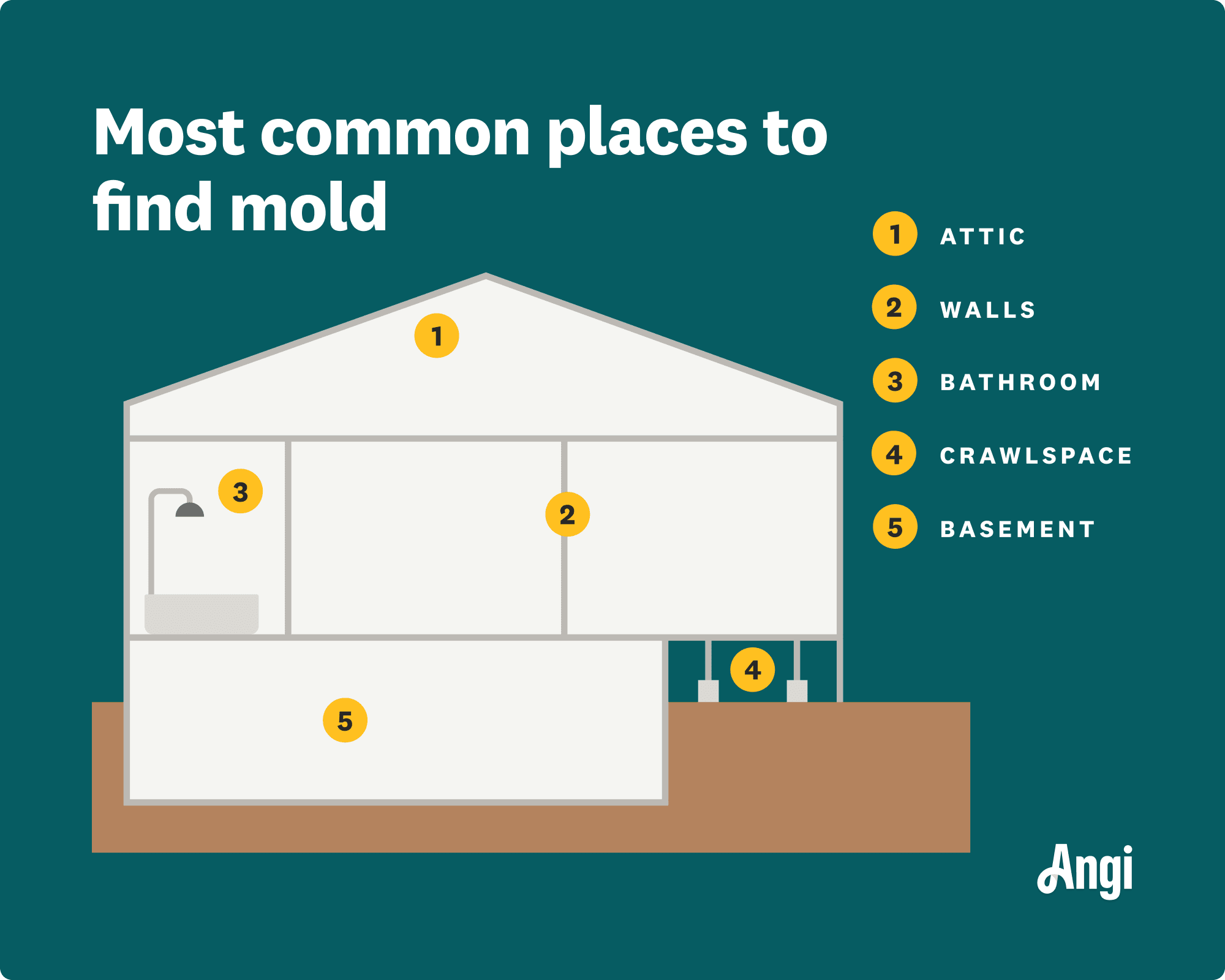
The cost of a mold inspection might seem high, but it’s one of the best investments you can make for your health and home. Read on to learn cost-saving tips.
Mold remediation costs in Washington, D.C. cost $2,312 on average, but it can cost between $1,169 and $3,597, depending on location, type, and size of infestation.


Mold remediation costs in Washington, D.C., range from $10 to $30 per square foot.
Remediation costs more in hard-to-access areas, such as walls and HVAC systems.
Mold remediation specialists must be licensed to work in Washington, D.C.
Unresolved mold issues can cause health problems and make it harder to sell a home.
Washington, D.C., sees high humidity levels, especially during hot summers, making it a prime climate for in-home mold growth. Mold remediation in Washington, D.C., costs range from $1,169 to $3,597, depending on mold location, size, and type. Homeowners in D.C. should watch for mold growth and expect to pay $2,312 on average for mold remediation. Use this guide to help determine what costs to expect when hiring a mold remediation company.
Various factors can affect the cost of mold remediation in your Washington, D.C. home. These include mold location, infestation size and type, inspections and testing, and damage repair.

It costs more to remove mold from certain areas of your home than others. For instance, mold growth in hard-to-reach areas, like in your HVAC system or drywall, can require more time and materials to remove than mold in very accessible areas, driving up costs.
| Location | Average Remediation Cost in Washington, D.C. |
|---|---|
| Attic | $1,000–$8,000 |
| Basement | $500–$9,000 |
| Crawl space | $500–$7,000 |
| Wall | $700–$20,000 |
| HVAC systems | $3,000–$10,000 |
| Bathroom | $500–$8,000 |
| Whole house | $10,000–$30,000 |
Most mold removal professionals in the Washington, D.C. area charge $10 to $30 per square foot. So, if you're removing mold from a 100-square-foot area, you can expect to pay around $1,000 to $3,000. But factors like where the growth is and the mold type can affect how much it costs to remove it.
Mold inspection costs between $300 and $1,045. Mold testing is key to determining whether you have the presence of mold in your home, plus the extent of the infestation. You’ll need to hire a mold inspector to test surface samples in your home before moving forward with remediation.
Regardless of how it affects remediation costs, you need to know which type of mold you have in your home for your safety. That said, if a mold test reveals the presence of black mold, your mold remediation pro will likely charge more to remove it based on the additional cost of protective equipment.
| Type of Mold | Description |
|---|---|
| Alternaria | A common mold found outside in spring and summer, it primarily attacks plants. |
| Aspergillus | White fuzz that turns black over time, but it can also be brown, yellow, and green. It can cause respiratory illness and requires immediate remediation. |
| Aureobasidium | Grows on painted surfaces and behind wallpaper. It’s often pink and causes allergies. |
| Chaetomium | Extremely toxic and can cause brain infections and various cancers. A white fuzz that turns to blue or green. Requires immediate professional removal. |
| Cladosporium | Commonly found in basements and HVAC systems. It can cause mild allergy symptoms. |
| Fusarium | One of the most toxic molds; requires professional removal once discovered. Often caused by water leaks, it is commonly found in walls and floors. |
| Penicillium | Blue-green and grows in areas of elevated moisture where water damage has occurred. It can be very dangerous. |
| Serpula lacrymans | Causes severe damage to wood and spreads fast. Unfortunately, this mold is usually found after it has spread widely. |
| Stachybotrys chartarum (black mold) | Extremely dangerous, not to mention fast-spreading. Requires immediate removal by a professional. |
| Trichoderma | Grows rapidly in wood, plants, and soil. Commonly found in HVAC systems and not as widely discovered as others in this list. |
| Ulocladium | A dark-colored mold found near windows and in kitchens and basements. Looks like black mold, but it isn’t as toxic to humans. Nevertheless, it still requires removal. |
If left untreated, mold can damage your drywall, carpeting, and flooring. Replacing or repairing your walls or floors will add costs to the removal.
Here are some cost estimates for different types of mold damage repairs in Washington, D.C.:
| Repair Type | Average Cost in Washington, D.C. |
|---|---|
| Drywall | $1,000–$2,900 |
| Carpet | $775–$2,600 |
| Flooring | $200–$550 |
When you hire a mold remediation specialist in Washington, D.C., costs range from $400 to $6,500. Labor costs are comparable to the national average, though you'll spend more on the low end in D.C. than in most cities. Only mold remediators licensed by the D.C. Department of Energy and Environment can remediate mold in D.C. properties.
A licensed mold assessor must take measurements, collect samples, prepare reports, and develop a remediation plan in Washington, D.C. In many cases, your mold remediator will carry this license, but you may pay additional labor costs if they have a separate team member with this role. If mold has damaged your drywall, HVAC, or other areas of your home, you’ll need to hire pros to do the repairs.
Mold remediation does not directly increase home value in Washington, D.C., but an ongoing mold problem can decrease it. Potential homebuyers may require the seller to remove mold before closing or negotiate a lower sale price so they can cover remediation costs themselves.
A D.C. home with a mold infestation will likely sit on the market longer and receive fewer and lower offers. Mold remediation can eliminate this problem in your home and help you sell it for its full market value. Also, mold remediation will make your home safer, reducing the chance of irritation and respiratory symptoms in household members. This is especially true for individuals sensitive to allergens or with a weakened immune system.
Home is the most important place on earth, which is why Angi has helped more than 150 million homeowners transform their houses into homes they adore. To help homeowners with their next project, Angi provides readers with the most accurate cost data and upholds strict editorial standards. We survey real Angi customers about their project costs to develop the pricing data you see, so you can make the best decisions for you and your home. We pair this data with research from reputable sources, including the U.S. Bureau of Labor Statistics, academic journals, market studies, and interviews with industry experts—all to ensure our prices reflect real-world projects.
Want to help us improve our cost data? Send us a recent project quote to [email protected]. Quotes and personal information will not be shared publicly.
From average costs to expert advice, get all the answers you need to get your job done.

The cost of a mold inspection might seem high, but it’s one of the best investments you can make for your health and home. Read on to learn cost-saving tips.

Got a moldy couch? You may not have to junk it. Learn how to remove mold from fabric furniture and keep your upholstery looking new.

Tired of an unmistakable odor permeating your living space? Learn how to get rid of a mold smell in your house, and reclaim a clean and odor-free home.

These tips will safeguard your home from mold growth after water damage. Protect your house and your health with these expert mold prevention strategies.

Who pays for mold remediation? Your homeowners’ or property insurance may help you pay some of the cost of removing mold, but it depends on the situation.

What causes mold? Excessive moisture in your home is likely to blame. Read on to learn more about what causes mold and how to prevent it.